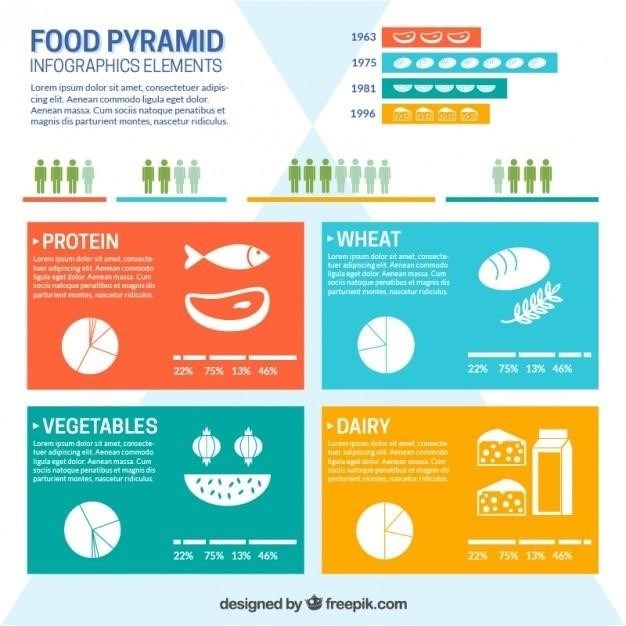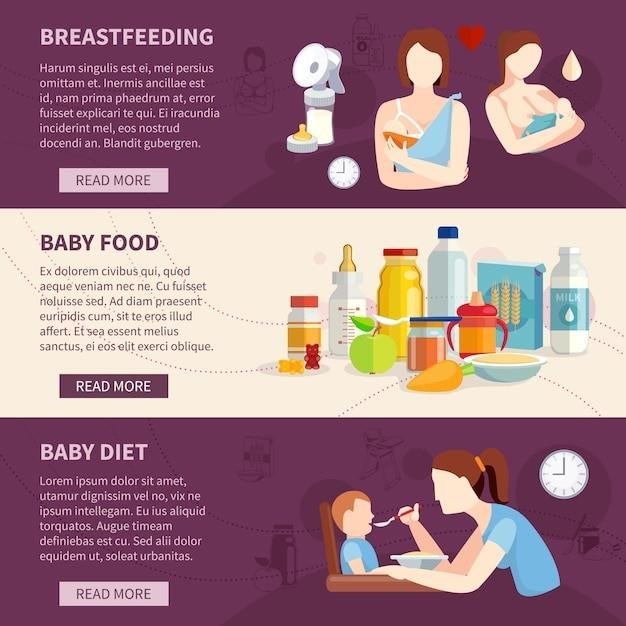The SOS Approach to Feeding⁚ A Comprehensive Overview
The SOS (Sequential Oral Sensory) Approach is a research-backed, transdisciplinary program addressing children’s feeding difficulties and growth concerns. It integrates sensory, motor, oral-motor, behavioral, medical, and nutritional factors for comprehensive assessment and intervention, improving comfort and food acceptance.
What is the SOS Approach?
Core Components of the SOS Approach
The SOS Hierarchy⁚ A Step-by-Step Progression
The SOS Approach utilizes a systematic, hierarchical progression to introduce new foods and textures. It begins with simple exposure, where the child simply tolerates the presence of food. The next step involves touching the food with different parts of the body, gradually progressing to smelling and then licking. Once the child is comfortable with these steps, small tastes are introduced, building up to larger quantities. Throughout this process, the focus is on creating positive associations with food, minimizing pressure, and celebrating successes. Each step’s duration is determined by the child’s individual comfort level, with the goal being a gradual expansion of acceptance. This structured approach helps the child build confidence and control, fostering a more positive relationship with food, leading to improved eating habits and overall well-being.
Applying the SOS Approach
Successful implementation requires a collaborative effort between therapists, parents, and the child. Strategies are tailored to the individual’s unique needs and developmental stage, focusing on positive reinforcement and gradual exposure.
Assessment and Treatment Strategies
A thorough assessment is crucial, encompassing a detailed medical history, feeding history, current eating behaviors, and sensory profiles. This multi-faceted evaluation considers the interplay of physical, sensory, behavioral, and developmental factors contributing to the child’s feeding challenges. The SOS Approach utilizes a variety of treatment strategies, individually tailored to address the unique needs of each child. These strategies may include desensitization techniques to reduce sensory sensitivities, structured mealtime routines to establish predictability and reduce anxiety, and positive reinforcement to encourage desired behaviors. Furthermore, the program incorporates strategies to promote oral-motor development and improve the child’s ability to manage different food textures and consistencies. The approach also involves education and support for parents and caregivers, empowering them to actively participate in their child’s feeding journey and implement strategies consistently at home. Regular monitoring and adjustments are made to ensure the effectiveness of the intervention and to adapt as the child’s progress warrants.
Addressing Underlying Causes of Feeding Difficulties
The SOS approach goes beyond surface-level behaviors to uncover and address the root causes of feeding problems. A comprehensive assessment identifies potential contributing factors, including medical conditions (e.g., gastroesophageal reflux, allergies), sensory processing difficulties (e.g., hypersensitivity to textures, tastes, or smells), oral-motor limitations (e.g., poor tongue coordination, weak jaw muscles), and behavioral factors (e.g., anxiety, learned avoidance). Treatment is tailored to these underlying issues. For instance, if sensory sensitivities are a major factor, desensitization exercises gradually introduce new textures and tastes. Oral-motor challenges might be addressed through targeted exercises to improve strength and coordination. Behavioral strategies, such as positive reinforcement and consistent mealtime routines, help to reduce anxiety and build positive associations with food. The SOS approach emphasizes a holistic view, recognizing that multiple factors often interact to create complex feeding challenges. By addressing these underlying causes, the program aims for sustainable improvements in a child’s eating habits and overall well-being.
Incorporating Sensory Integration Principles
The SOS Approach heavily emphasizes sensory integration, recognizing that children’s responses to food are significantly influenced by their sensory experiences. Many feeding difficulties stem from sensitivities or aversions to textures, tastes, smells, temperatures, or even the visual appearance of food. The SOS method uses sensory-based strategies to help children become more comfortable with a wider range of sensory inputs. This might involve introducing new foods gradually, starting with exposure to the smell, then touching, and finally tasting. Different textures are explored in a playful and non-threatening way. Activities focusing on oral-motor skills, such as blowing bubbles or using oral-motor tools, improve sensory awareness and control. The overall goal is to desensitize children to sensory aspects of food that might trigger negative reactions, enabling them to accept a broader variety of foods and textures without anxiety or distress. This approach fosters positive sensory experiences associated with eating, making mealtimes more enjoyable and less stressful.

Benefits and Effectiveness of the SOS Approach
The SOS Approach demonstrably improves children’s comfort levels with food, fosters positive mealtime associations, and yields sustainable long-term improvements in eating habits and overall nutritional well-being.
Improved Comfort Level and Food Acceptance
A primary benefit of the SOS Approach lies in its ability to significantly enhance a child’s comfort level during mealtimes. By systematically desensitizing children to various food textures, smells, and tastes through a carefully structured hierarchy, the SOS method reduces anxiety and fear associated with eating. This gradual exposure, coupled with positive reinforcement and a focus on sensory exploration, helps children develop a more positive relationship with food. The approach acknowledges that sensory sensitivities play a crucial role in feeding difficulties, addressing these sensitivities directly. Instead of forcing children to consume foods they find aversive, the SOS Approach empowers them to explore and interact with food at their own pace, leading to increased acceptance and willingness to try new things. This fosters a sense of control and mastery, further boosting their confidence and reducing mealtime stress for both the child and the family.
Positive Mealtime Associations and Family Dynamics
The SOS Approach goes beyond addressing just the child’s eating difficulties; it actively works to transform the overall family mealtime experience. By creating a supportive and encouraging environment, free from pressure and power struggles, the SOS method fosters positive associations with food and eating. The focus shifts from forcing consumption to creating enjoyable interactions with food, turning mealtimes into opportunities for connection and shared experiences. This positive approach significantly reduces family stress and conflict often associated with children’s feeding challenges. Parents learn effective strategies for managing challenging behaviors and fostering a sense of collaboration rather than confrontation. Consequently, mealtimes evolve into more relaxed and pleasant occasions, strengthening family bonds and improving overall family well-being. The improved dynamics extend beyond the dining table, impacting family relationships in a positive and lasting manner.
Long-Term Outcomes and Sustainability
Successful implementation of the SOS Approach yields substantial long-term benefits. Children experience improved nutritional intake, leading to better growth and overall health. The positive mealtime associations established during therapy translate into sustained improvements in eating habits, reducing the likelihood of future feeding difficulties. Families gain valuable skills and strategies for managing their child’s eating behaviors effectively, promoting independent eating skills and reducing parental stress. The approach’s emphasis on addressing underlying sensory and behavioral issues contributes to long-term improvements in a child’s overall well-being, extending beyond just mealtimes. This holistic approach fosters independence and self-confidence in eating, equipping children with the skills to navigate food choices and meal situations throughout their lives. The positive impact on family dynamics also endures, contributing to healthier and more harmonious family relationships. The SOS approach empowers families with sustainable strategies for maintaining progress even after formal therapy concludes.

SOS Approach in Practice
The SOS Approach involves collaborative efforts between therapists and parents, utilizing a structured, sequential process to introduce foods and address sensory sensitivities. Real-world examples illustrate its effectiveness.
Role of Therapists and Parents
Therapists play a crucial role in guiding the SOS approach, conducting thorough assessments to identify underlying causes of feeding difficulties. They develop individualized plans, incorporating sensory integration principles and behavioral techniques. Parents are integral partners, actively participating in mealtimes and implementing strategies at home. Consistent application of the SOS approach by both therapists and parents is vital for success. Therapists provide education and support, empowering parents to manage mealtimes effectively. This collaborative approach fosters a positive and supportive environment, crucial for a child’s progress. Regular communication and feedback between therapists and parents ensure the plan remains tailored to the child’s evolving needs. The therapist’s expertise combines with the parents’ intimate knowledge of their child to create a powerful, synergistic approach to overcoming feeding challenges. This shared responsibility promotes a sense of teamwork and shared success. The consistent reinforcement of learned behaviors at home reinforces progress made during therapy sessions.
Case Studies and Real-World Examples
Illustrative case studies showcasing the SOS approach’s effectiveness in diverse situations are invaluable. These examples highlight the individualization of treatment plans, emphasizing the unique needs of each child. A child with sensory sensitivities might benefit from gradual desensitization techniques, while another might require behavioral strategies to address food refusal. Real-world examples demonstrate the versatility of the SOS approach. Case studies can include detailed accounts of a child’s initial presentation, the tailored intervention plan developed, and the progress observed over time. Successful outcomes highlight the positive impact of the SOS approach on children’s feeding behaviors, weight gain, and overall well-being. Conversely, challenges encountered and strategies for overcoming them provide valuable learning opportunities. Sharing these experiences helps professionals refine their techniques and adapt the approach to various scenarios. The inclusion of parent perspectives enhances the authenticity and relatability of these case studies.
